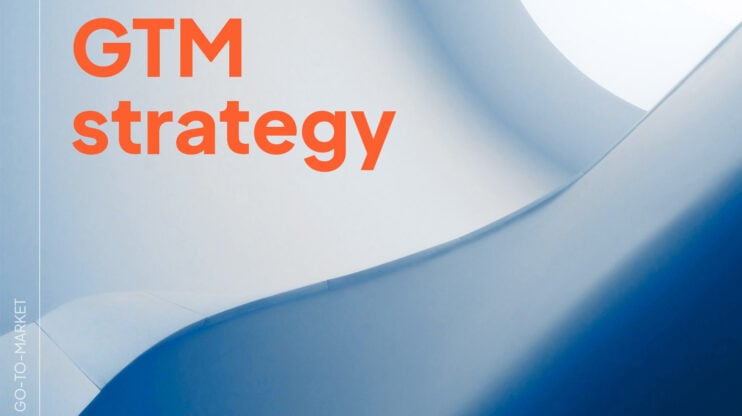You bought a domain name. It felt like a smart move: the perfect brand name or side project idea you were sure someone would want. Now it just sits there, and you’re stuck thinking: what’s next?
Every year, thousands of people buy domain names hoping to flip them and start selling them for profit. Most beginners hit the same wall: they don’t know how to monetize domain sales effectively, think nobody wants their name, or assume they’re missing something the pros know. Only about 1–2% of domain names listed for sale actually sell each year. (That number comes from the common experience of seasoned investors and major marketplaces.)
There’s no magic shortcut in this journey, but there is a proven roadmap. You can make money by flipping domains for profit, parking them to earn passive ad income, leasing them to businesses for recurring payments, or even offering website and domain bundles to stand out from competitors. We’ll discuss each of these domain monetization strategies in plain language and see which is the best for you.
What does it mean to monetize a domain name?
If you own a domain name, you already have a digital asset. Monetizing a domain simply means finding a way to turn that asset into real money. There’s no single method that works for everyone. Some people want to flip domains quickly, others build long-term passive income streams, and experienced sellers use a combination of strategies. Here are the 4 most common domain monetization methods domain investors use to make money:
Flipping
This is the classic approach to selling domain names for profit. You buy a domain at a low price and sell it later for a higher price. Success depends on finding names with strong keywords, brand potential, or high demand in certain industries. For example, someone buys pivotstartup.com for $10, holds it, and later sells it for $1,895. However, keep in mind that most domains don’t sell right away. It takes patience and research.
Parking
Domain parking allows you to display ads on your unused domain. If people visit and click on the ads, you earn small commissions. This works best with “type-in traffic” (when users type your domain directly into their browser). For example, bestshoesonline.com gets occasional visits, and each visitor could generate a few cents. In this case, be aware that most parked domains earn less than $10 per month.
Leasing
Instead of selling your domain, you rent it out to a business for recurring income. This works best with local or niche domains like plumbernewyork.com or bestlawyersydney.com. Leasing can create steady monthly revenue while keeping long-term ownership.
Building starter websites (pro-level strategy)
Some investors don’t just sell a name, they offer a domain with a package. Most buyers who shop for a domain also want to launch a website right away. If you can offer them both the domain and a ready-made website, you instantly make your offer more attractive and valuable.
At first, this idea might sound overwhelming. You may be thinking about the cost of hiring developers and designers, and the time and money it’ll cost you to do this. That used to be true, but not anymore. Today, there are amazing tools that handle most of the hard work for you automatically.
With solutions like the 10Web Website Builder API, you can instantly create fully built WordPress websites on your domains:
- No coding or design skills required
- AI handles the website structure, design, and content
- It’s fully white-label, so you deliver the website under your own branding
- You hand over a complete, ready-to-use site along with the domain
This strategy turns your domain from a simple name into a full “business-in-a-box” offer that feels far more valuable to buyers. You reduce friction, increase buyer confidence, and close deals faster.
Key domain terms you need to know
Before we cover every proven strategy so you can confidently learn how to monetize domain sales, let’s define a few important terms you’ll see throughout this guide:
- TLD (top-level domain): The extension at the end of a domain name, like .com, .net, .org, or newer ones like .ai and .io.
- Type-in traffic: When someone types your domain name directly into their browser (instead of using a search engine). Example: Typing bestshoes.com directly into the address bar.
- Domain marketplace: A platform where you can list your domain for sale to buyers worldwide. Examples include Sedo, Afternic, and Flippa.
- Escrow service: A secure third party that holds the buyer’s payment until the domain transfer is complete. This protects both the buyer and seller from fraud. Example: Escrow.com is widely used for domain sales.
- White label website builder: A tool that lets you build and deliver websites under your own brand, so clients never see the third-party provider. For instance, the 10Web AI Website Builder API offers this feature for domain sellers who want to bundle domains and websites.
- API (application programming interface): A way for software tools to connect and work together automatically. In the case of Website Builder API, it lets you build and manage websites on your domains through automation, without needing to code.
Step-by-step on how to monetize domain sales
Most successful domain investors don’t stick to just one method. They mix and match. And there are a couple of initial steps that are important and similar independent of what strategy you choose. So, let’s go step-by-step and understand how to monetize domain sales.
Step 1: Evaluate your domain’s potential
Before you list or market any domain, take a hard look at what you actually own. If you are planning to buy, explore how to choose a domain name that’s unique and brandable. Some domain types hold more long-term value than others:
- Generic names: Single words that describe products, services, or industries tend to be the most desirable. Think “shoes.com” or “accountingservices.com.” New or emerging industries can also offer strong potential.
- Business names: Simple names tied to professional services (like bestdentistboston.com or plumberseattle.com) can be highly sought after by local businesses wanting strong online branding.
- Geographic names: City names, neighborhoods, or regional destinations often become valuable for community portals, tourism, or local business directories. These names tend to age well as their markets grow.
- Timely names: Event-based domains tied to specific years or trends (2025TechAwards.com) can sometimes earn quick flips, but their window of value is short.
Step 2: Check for trademarks and legal risks
The second step in how to monetize domain sales is making sense of the legal side. Trademark issues are one of the biggest hidden risks in domain investing. Even if you chose a great-sounding name, it could violate an existing brand’s rights. That could lead to you losing the domain and possibly facing legal fees.
To be safe, run a search with the U.S. Patent and Trademark Office’s online tool (or your local country’s database) to check for existing registrations. If in doubt, avoid names that are clearly tied to known companies, celebrities, or brands.
Step 3: Get your domain valued
Unlike stocks or real estate, domain values are highly subjective. There is no universal formula. The same domain might be valued at $500 by one investor and $5,000 by another. Automated appraisal tools can give you a starting point:
- GoDaddy Appraisal: Offers a ballpark estimate.
- Estibot: Analyzes a domain based on keywords, length, and extension.
Keep in mind that these tools often provide inflated numbers. The true value is what a buyer is willing to pay, which depends on demand and timing. Here are the most common things buyers look for:
- Length: Shorter names are usually more valuable. Single-word domains are the gold standard.
- Keywords: Names that match high-traffic industries or commonly searched terms have strong appeal. Example: bestlaptops.com is much easier to sell than joesdiscountdeals247.com.
- TLD: Classic extensions like .com almost always command higher prices. Newer extensions like .io and .ai can also hold strong value in tech or startup circles.
- Market trends: Certain niches become hot based on current events or industry growth. Domains related to AI, crypto, or sustainability have gained value in recent years.
- Age: Older domains tend to have more trust and SEO authority.
- Brand potential: Names that are easy to remember, spell, and say out loud will always outperform complex or awkward names.
- Existing traffic: If your domain gets type-in traffic, you can justify a higher asking price.
In this process, keep in mind a couple of common mistakes you can avoid:
- Don’t overprice: An unrealistic asking price scares off potential buyers. Research similar sales to stay grounded.
- Leave room to negotiate: Buyers often expect to bargain. If your ideal price is $2,000, consider listing it at $2,500.
- Use comparables: Check past sales listings to understand what similar domains have sold for.
- Add value with a website: Bundling a domain with a ready-to-use starter site built using a tool like 10Web Website Builder API can justify a higher price. Many buyers will pay a premium for an instant business presence instead of just a name.
Step 4: Choose your domain monetization strategy
Now decide how you want to earn from the domain. Choosing the right strategy is critical in learning how to monetize domain sales successfully. We will cover each of them as we go. So, now let’s go back to the domain monetization methods we introduced and see which one fits you best:
| Strategy | Effort Level | Risk | Income Potential | Best For |
| Flipping | Medium | Medium | High (but rare) | Investors with patience + research |
| Parking | Very Low | Low | Very Low | Passive holders with type-in traffic |
| Leasing | Medium | Low | Medium to High | Owners of niche or local business domains |
| Starter website + domain bundle | Low to Medium (with API) | Low | High | Sellers wanting to increase value & close deals faster |
The fourth option has become an increasingly popular pro strategy. Adding a ready-made website makes your domain far more attractive to buyers who want an instant solution. This approach lets you increase the perceived value of even an average domain with very little extra work.
Step 5: Choose the best marketplace to sell your domain
If you decide to sell or lease your domain, you need to use platforms. There’s no single “best” platform. Each site attracts different buyer types and offers unique opportunities for selling domain names for profit:
| Platform | Overview | Best for |
| Sedo | Large global marketplace with a strong reputation. Works well for premium, short, or keyword-rich domains that appeal to international buyers. | Sellers looking for high-end sales and willing to wait for the right buyer. |
| Afternic | Owned by GoDaddy. Distributes your domain across dozens of registrar partners for huge exposure. Slightly higher fees apply. | Investors who want the widest possible audience and fast distribution. |
| Dan | Clean, simple platform with fast transactions. Allows buyers to set up flexible payment plans. | Side-hustlers, personal brand builders, or small business buyers looking for brandable names. |
| Flippa | Auction-based marketplace with a strong entrepreneurial community. | Niche domains, starter websites, or domains bundled with a ready-made website (great fit for sellers using 10Web Website Builder API). |
| GoDaddy Auctions | Fast and simple to list if your domain is already registered with GoDaddy. Huge pool of global buyers. | Everyday business names, local service domains, or product-based domains. |
You can also approach potential buyers directly, especially if your domain fits a specific business type. For example, a local plumber, law firm, or real estate agency may happily pay a premium for a domain that exactly matches their brand or city. In both cases, whether you are using a platform or selling directly, you can upsell your domain offer with a website and earn more as a result. We will discuss this in the coming sections.
Step 6: Create a strong domain listing
Good listings sell. Poor listings get ignored. Make sure your domain listing includes:
- A clear, simple title
- A short description of why the domain is valuable and who it’s perfect for
- Reasonable pricing: don’t price yourself out of the market, but leave room to negotiate
The strongest offer would be the bundle offer with a website, as we discussed.
Step 7: Secure the transaction and transfer safely
Never transfer a domain without first securing payment through a trusted third-party service. Escrow.com is the gold standard in the domain world. They act as a neutral party, holding the buyer’s funds until the transfer is complete. Some common frauds can occur, so make sure you are following safety protocol. Once done, you’ve successfully learned how to monetize domain sales safely and with minimal risk.
What if you want to park your domain instead?
If you’re not ready to sell, you can park your domain and earn a small amount of passive income by showing ads to visitors. This works best for domains that naturally get type-in traffic. Most parked domains generate very little revenue (often under $10 per month), but it can be worthwhile for larger portfolios. Some of the most popular domain parking platforms include:
- Sedo Parking (well-known, easy to use)
- Bodis (fast setup, simple dashboard)
- ParkingCrew (good option for professional domain investors with large portfolios)
Parking is purely passive but rarely delivers high earnings. Many domain investors prefer to combine parking with active selling to maximize results.
The #1 advanced strategy: Bundle websites with your domains to close more sales
A domain, together with a fully built website, is the best way to attract more buyers, close deals faster, and justify higher asking prices. Let’s see how this option works.
How to automate website creation using 10Web Website Builder API
In the past, creating full sites for domains required expensive developers or learning web design yourself. Today, you can automate the entire process with the 10Web Website Builder API. Here’s what makes it perfect for domain investors:
- 100% white-labeled: Your domain, logo, and branding across every customer touchpoint
- AI-powered website generation: Instantly create full WordPress sites—layouts, copy, and images included
- Ecommerce support: Launch WooCommerce stores with product catalogs, order management, and payments
- Drag-and-drop visual editor: White-labeled Elementor-based builder that makes client handoff easy
- Built-in managed hosting: SSD-based containers, 99.99% uptime, backups, smart caching, and staging environments
- Domain & SSL management: Set primary domains, manage DNS, and issue SSL certificates programmatically
- Automation-ready: Manage plugins, optimize performance, and trigger updates automatically
- Scalable REST API: Use SDKs for Node.js, Python, and PHP plus team permissioning and webhook event triggers for bulk workflows
You can build one site or scale to hundreds of domains effortlessly. The result: you deliver fully branded, fully functional websites with every domain you sell.
Launch fully managed WordPress sites with your logo, pricing, and dashboard!
Sell Hosting Under Your Own Brand
How to upsell website hosting and site setup to boost revenue
Beyond the initial sale, you can unlock recurring income by offering:
- Optional hosting and maintenance
- Customization services for the buyer (colors, logo, extra pages)
- Ongoing support or additional website features
All those are included in 10Web. This combination of domain + website + hosting lets you offer a complete, fully branded solution while keeping everything automated and scalable behind the scenes. It’s the best way to stand out in the marketplace and master how to monetize domain sales like a pro.
How to avoid scams and sell your domain safely
The domain marketplace is mostly honest, but scams do happen. If you’re serious about selling domain names for profit, protecting yourself during transactions is just as important as choosing the right domains. Here’s how to avoid the most common domain monetization pitfalls and close your sales securely.
The most common scams and how to avoid them
- Fake appraisal scam: A “buyer” expresses interest in your domain but insists you first pay for a professional appraisal from a specific service they recommend (often fake). Legitimate buyers never force sellers to pay for appraisals.
- Overpayment scam: A scammer sends you a payment larger than the asking price and asks you to refund the difference—before their original payment inevitably bounces. Only accept exact agreed payments. Never refund anything until you’re 100% certain the funds have cleared.
- Unauthorized transfer scam: The buyer tricks you into transferring the domain before payment has been secured. Always use a secure third-party escrow service (explained below).
Why escrow services protect you and your buyer
The safest way to sell a domain is to use a licensed escrow service. Escrow acts as a neutral third party:
- The buyer sends funds to escrow.
- You transfer the domain to the buyer.
- Once the buyer confirms receipt, escrow releases the payment to you.
This process protects both sides from fraud. The most trusted escrow service in the domain world is Escrow.com. Avoid using PayPal for domain transactions. It’s convenient, but their buyer protection policies were never designed for domain transfers and disputes can get complicated.
How to transfer domain ownership safely
The technical steps are simple:
- Log in to your domain registrar account.
- Unlock the domain for transfer.
- Get the authorization code (sometimes called EPP or transfer code).
- Provide the buyer with the code once escrow confirms funds have been received.
- The buyer initiates the transfer with their registrar and completes the process.
Congratulations. You’ve sold your domain securely and minimized your risks!
What it really takes to succeed with domain monetization
Building a profitable domain portfolio takes time and patience. The more you refine your approach, the better your results will be as you figure out how to monetize domain sales consistently. Very few domains sell overnight. Success comes from understanding the market, choosing strong names, and being willing to hold or reposition assets over time.
One of the smartest ways to increase your success rate is by offering more than just a name. Buyers want complete solutions that they can start using immediately. Bundling a domain with a ready-made website makes your offer stand out and can justify a higher price. It’s a proven way to increase conversions and close deals faster.
If you want to simplify that process and scale across multiple domains, consider using a white-label platform like 10Web Website Builder API. It lets you automate website creation, manage hosting, and deliver fully branded sites with minimal effort!
See how easy it is to integrate AI website generation into your platform!
Request your API demo now
FAQs
How to earn money by selling a domain? How do I monetize my domain? Is it legal to invest in domains? Is selling domains profitable? How do I get paid when I sell a domain on GoDaddy? What is the best way to sell a domain name? How much can a domain name sell for? Is it worth selling a domain name? How do I know what my domain name is worth? What’s the easiest way to make money from a domain? Is domain flipping legal? How can I securely sell a domain? Is domain parking worth it? How do I know if my domain has value? Can I lease my domain instead of selling? Is there a tool to automatically build websites for my domains?
See how easy it is to integrate AI website generation into your platform!
Request your API demo now











